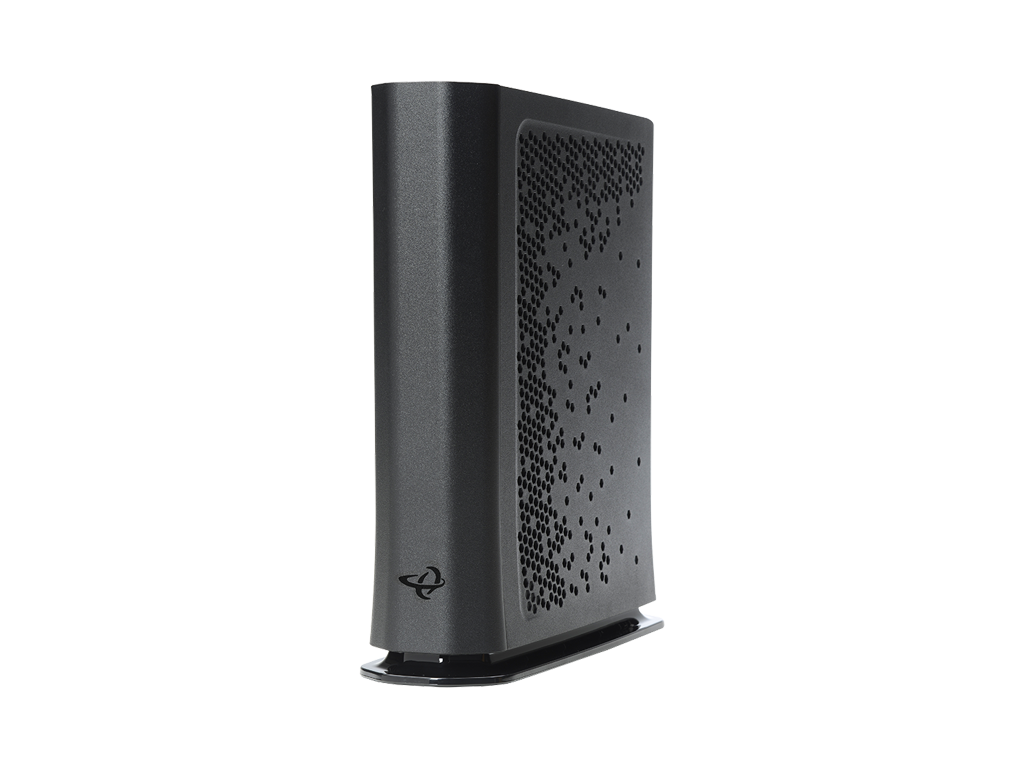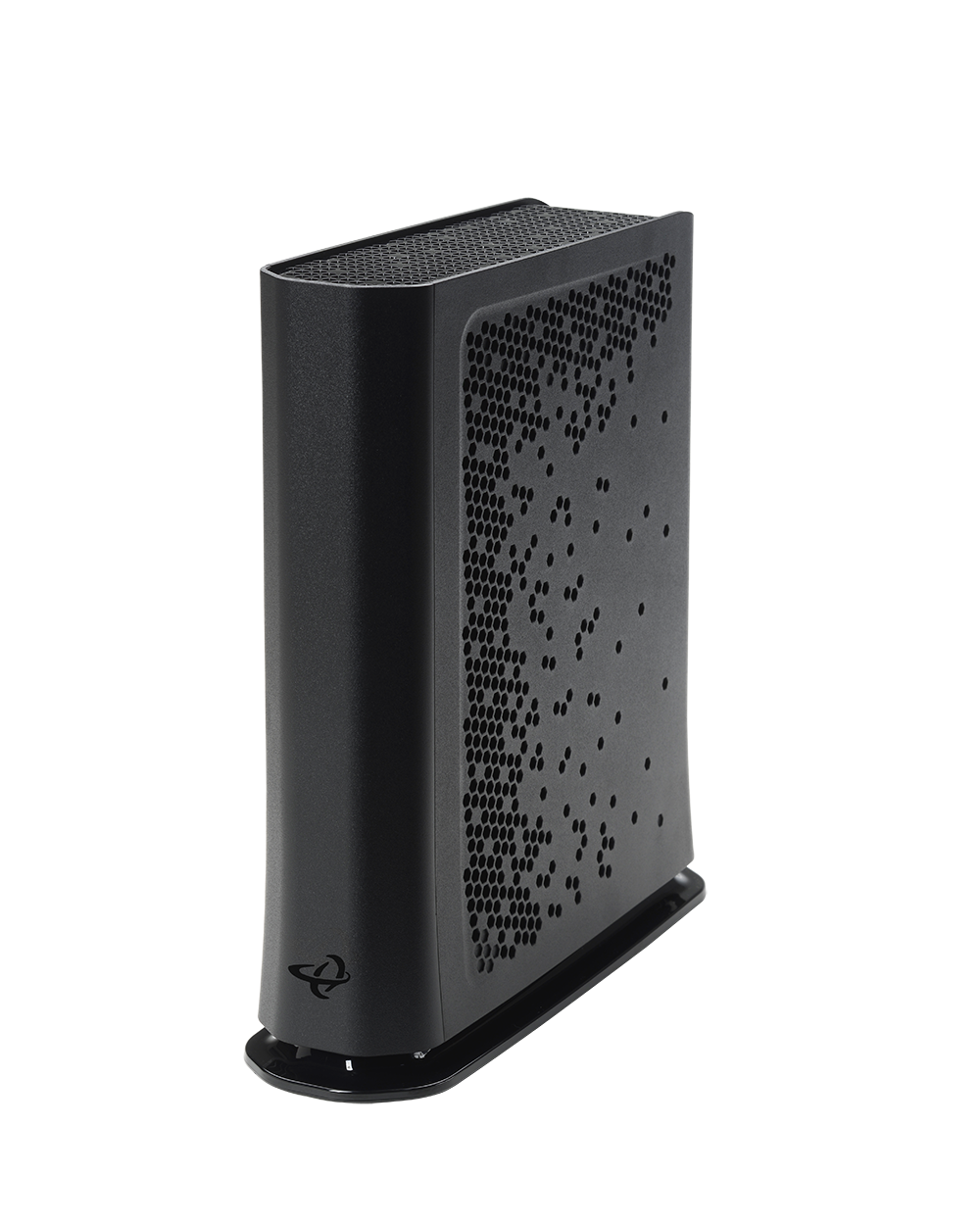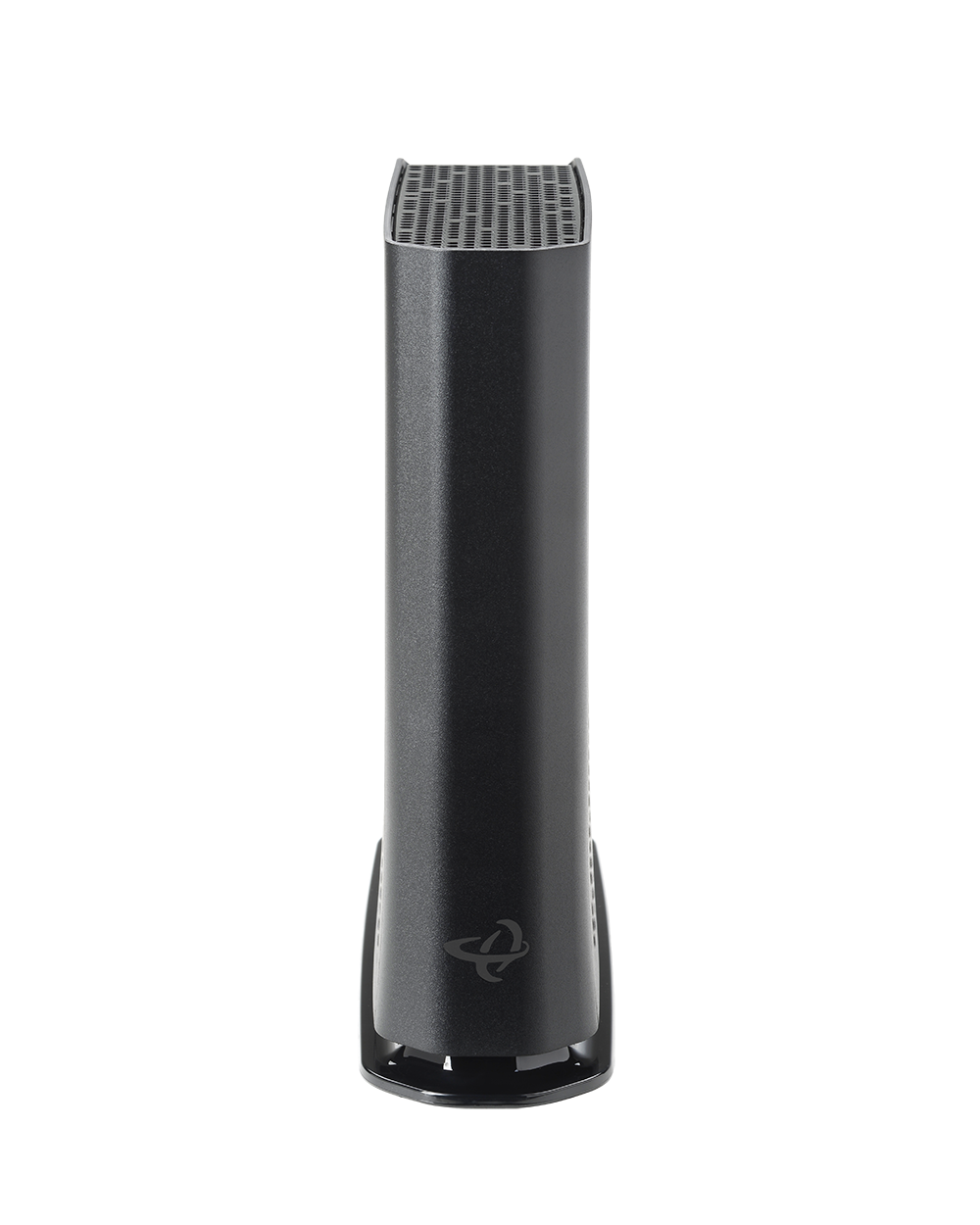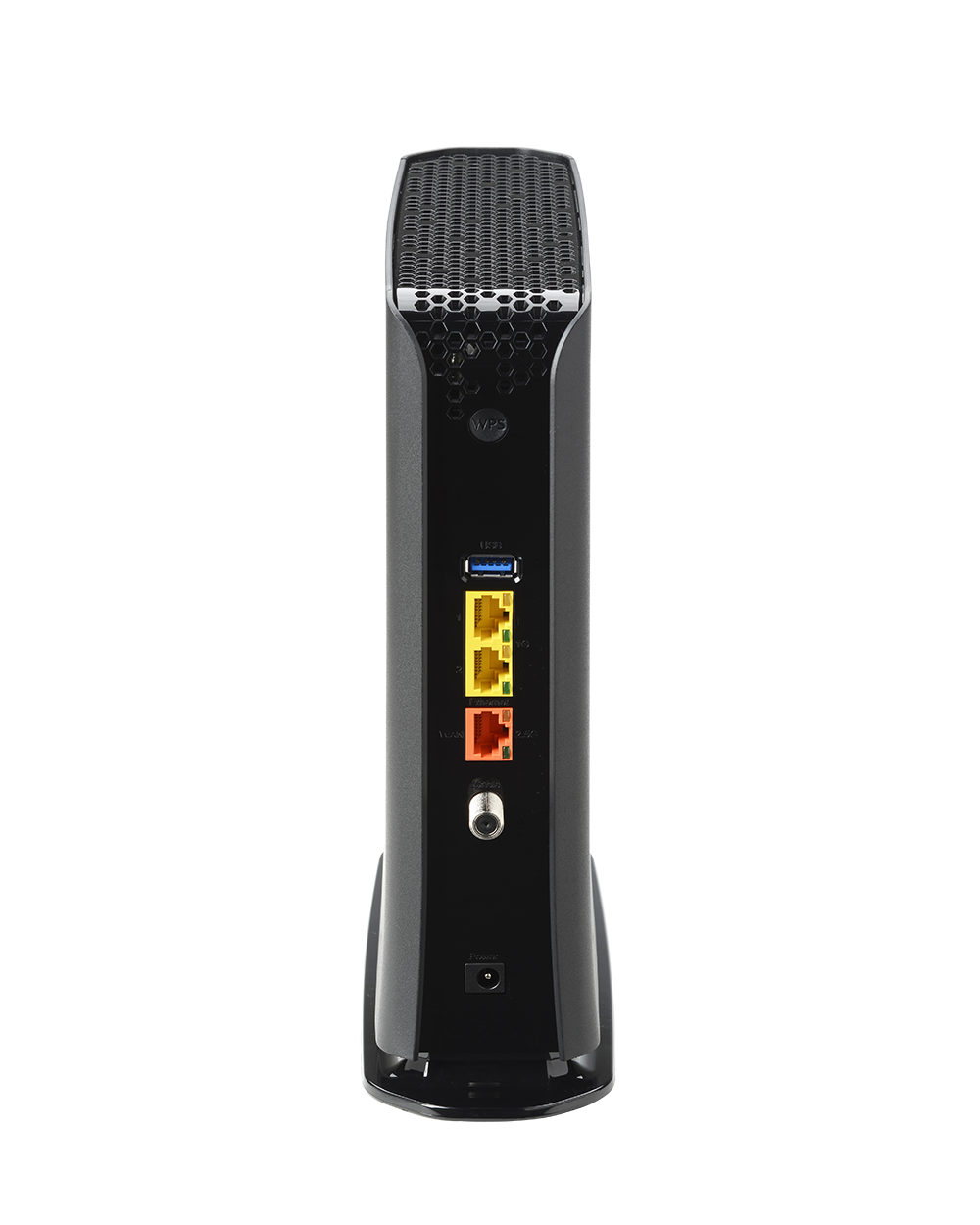DOCSIS 3.1 with Full Backward Compatibility
Supports 2×2 OFDM/OFDMA plus DOCSIS 3.0 32×8 bonding to ensure multi-gig performance today with smooth compatibility for existing DOCSIS 3.0 deployments.
Extended Downstream to 1218 MHz
Provides expanded downstream capacity, enabling more throughput and future-proofing networks for higher-speed broadband plans.
Flexible Upstream Frequency
Switchable upstream modes (5–85 MHz / 5–204 MHz) support mid-split and high-split transitions without hardware replacement.
Wi-Fi 6 Advantage
Dual-band Wi-Fi 6 with 4×4 5 GHz and 4×4 2.4 GHz radios ensures higher speeds, lower latency, and improved efficiency for multiple connected devices.
Multi-Gig Wired Connectivity
Features 1× 2.5 Gbps Ethernet port and 2× 1 Gbps ports for high-speed wired backhaul and device connectivity.
Carrier-Grade Management
Supports TR-069, TR-369, SNMP, and HNAP, and integrates with Hitron’s management ecosystem (MyHitron+, HitronCloud) for simplified provisioning, troubleshooting, and diagnostics.
Benefits for Service Providers
- Future-Proofed with Extended Downstream: Ready for faster broadband services thanks to 1218 MHz downstream support.
- All-in-One Simplicity: Combines DOCSIS 3.1 modem and Wi-Fi 6 router into one device to reduce install complexity and streamline support.
- Flexible Deployment: Backward compatible with DOCSIS 3.0 and adaptable to evolving upstream splits.
- Enhanced Customer Experience: Strong Wi-Fi 6 and multi-gig wired connections support 4K/8K streaming, gaming, smart homes, and more.
Key Specifications
- DOCSIS Support: DOCSIS 3.1 (2×2 OFDM/OFDMA) + DOCSIS 3.0 (32×8)
- Downstream Band: Extended up to 1218 MHz
- Upstream Modes: Switchable 5–85 MHz / 5–204 MHz
- Wi-Fi: Dual-band Wi-Fi 6 (4×4 5 GHz + 4×4 2.4 GHz)
- Ethernet Ports: 1× 2.5 Gbps + 2× 1 Gbps
- Management: TR-069, TR-369, SNMP, HNAP, MyHitron+, HitronCloud
- Other Features: IPv4/IPv6 support, multiple SSIDs, advanced security and firewall features
Documentation
Other Products to Consider
Product
Modem Type
Frequency
WiFi
Wired LAN
Voice
Learn More about Cable Modems & Routers
DOCSIS 3.1 Technology Explained
Currently, DOCSIS 3.1 technology is the best on the market for cable modems. You might already know this, but it is important to also know why DOCSIS 3.1 is the best. To understand why it’s the best, you need to understand DOCSIS technology and how it works. ...
What is a DLNA Media Server on My Router?
The DLNA (Digital Living Network Alliance) is a trade organization that sets standards and guidelines for home networking devices. It makes media file access within your home network easier. This includes sharing content across PCs, smartphones, tablets, smart TVs,...
What is the Advantage of MU-MIMO?
MU-MIMO is a feature of today’s WiFi that makes your wireless Internet usage better. Here’s what you need to know about MU-MIMO and its advantages. What is MU-MIMO & How does it work? MU-MIMO stands for Multi-User, Multi-Input, Multi-Out. It is a feature...
Cable Modem Router: 2.4 GHz vs 5 GHz Wi-Fi
Today’s Wi-Fi connected devices demand a lot from your cable modem router and wireless service, which means you may find yourself looking to upgrade to a router that boasts both 2.4 GHz and 5 GHz bands (also known as dual-band). 2.4 GHz and 5 GHz refer to the two...
WiFi Cable Modem Routers Explained: Benefits of 802.11ax WiFi vs 802.11ac WiFi
A cable modem router, also known as a gateway, is a combination device that performs both the modem and the router functions. This means that the cable modem router communicates with Internet service providers (ISP) for an Internet connection and distributes the...




